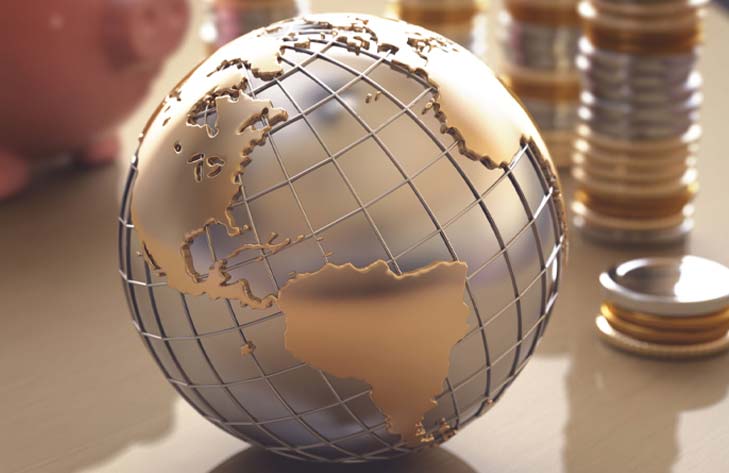
Recent Stimulus Packages
Since March, the US has been sending out $1400 cheques to adults as part of its $1.9tn stimulus package. It is no surprise, then, that data on personal income saw a sharp jump of 21.1% in March. However, what is surprising is how quickly inflation is turning up.
Compared to last year, the US inflation rate rose 2.3%, which is on top of a previous increase of 1.5% over the previous year. As shops and businesses slowly start to open once again, inflation will undoubtedly rise further.
Prices of everyday items have recovered since the first lockdown. The issue is, the US inflation rate will hit 2.8% YoY in the March to May period at a bare minimum — if prices don’t rise any further. That’s a big if.
However, it is possible that inflation will reach 3.5%, even 4% by the summer in the US. This is because numerous costs still need to work their way through the system and ultimately to the consumer, such as rising fuel costs. As vaccination programmes take place around the world and as countries eventually start reopening their economies for work and leisure, we can expect to see businesses raising their prices.
Inflation will most likely start its climb in the hospitality industry. This is because, with less competition and greater demand, pricing power is going to be strong. This industry will be keen to make up for a year of little to no sales, so sharp rises in costs can be expected.
Many other factors affect the national inflation level. In the UK, private rental prices rose by 1.3% in January ’21. And, with oil at a 13-month high, a full tank of diesel costs £69.56, which is £4.75 more than what it cost only five months ago.
Concerns Over Managing Inflation
The concern about the rise in global inflation centres on whether we will be able to manage it this time. Consider the US $900bn fiscal support package, followed by the $1.9tn package, followed by a potential $3tn package, in addition to the Federal Reserve’s purchasing of $120bn in financial assets every month, and that is only the US.
Meanwhile, in Europe, the EU’s long-term budget and NextGenerationEU, the temporary instrument designed to boost the recovery, will be the largest stimulus package ever financed in Europe, totalling €1.8 trillion.
Over in Asia, South Korea has announced a stimulus package of $333.7 billion; India, $332.9bn; Singapore, $85.7bn; Indonesia, $74.7bn; and the Philippines, $17bn.
This means that in addition to the now-routine monthly stimulus programmes by central banks, in addition to the quantitative easing, and all its other pseudonyms, which have been running non-stop for the last decade, governments around the world have now signed cheques to the tune of $9tn — and we are not even halfway through the year.
Want to protect your income and savings? Invest in bullion.
If fuel bills have risen 7.32% within five months, what’s going to happen once businesses reopen and $9tn floods every high street around the world?
What compounds this situation further is that we still have a long way to go regarding the pandemic. With new strains popping up around the world, vaccine setbacks, and many unknowns, such as whether current vaccines will work against new and future strains, there is now a greater potential risk of higher inflation for longer than we previously thought.
Pent-Up Consumer Demand
Adding to this is the issue that some of these stimulus programmes are heavily front-loaded, especially the newest programme in the US, which promises everyone earning under $75,000 a cheque of $1,400. We are already expecting to see an increase in consumer demand as economies reopen, and giving everyone sizeable cheques is only going to fuel further spending, in turn, lengthening and exacerbating inflation.
Since Q3 2019, household cash and savings deposits have risen by $2.4tn, and credit card balances are at 4-year lows. There is a significant amount of money lying dormant in our economies, and future inflation levels will depend on when and how quickly that money is spent.
Personal consumption grew last month by 4.2%. We can only expect this number to grow each month as vaccination programmes roll out and governments around the world ease lockdown restrictions. Some economists think that it is only a matter of time before pent-up demand is released.
We all hope to see the global economy return to how things once were, or at least to some level of normality. However, the high levels of stimulus coupled with large piles of cash lurking in the economy are warnings. If you wish to protect your current and future spending power, then you should take action now.
Gold as an Inflation Hedge
Throughout history, one of the best ways people resisted inflation’s wealth-eroding effects has been by investing in gold and silver. This is because supplies of both precious metals are limited. While currencies can be printed to almost infinite quantities, devaluing all the notes in your back pocket along the way, gold and silver cannot — therefore their price increases.
Before the financial crisis in 2008, gold was around £300 per ounce, and since then gold has been on its steepest climb since records began. Quantitative easing and global crises pushed gold up to record levels over £1,450 in late 2020, View the current price of gold in real-time here, an almost five-fold jump in just over 10 years.
With unprecedented levels of fiscal stimulus being pumped into the global economy and an uncertain economic outlook, where do you think gold will be in the next 10 years? If you would like to protect your wealth and make inflation work for you, rather than against you, then invest in gold or silver.
At The Gold Bullion Co., we offer market-leading prices for all our bullion. With bullion coins and bars from fractions of an ounce to multiple kilos, we’ve got something to suit your budget — invest now.
Copyright: ktsdesign / 123RF Stock Photo















